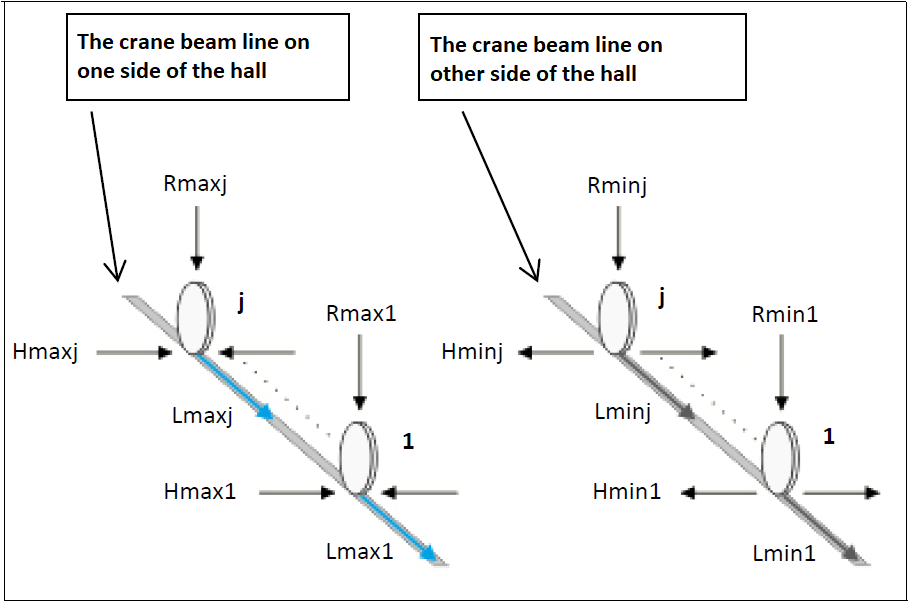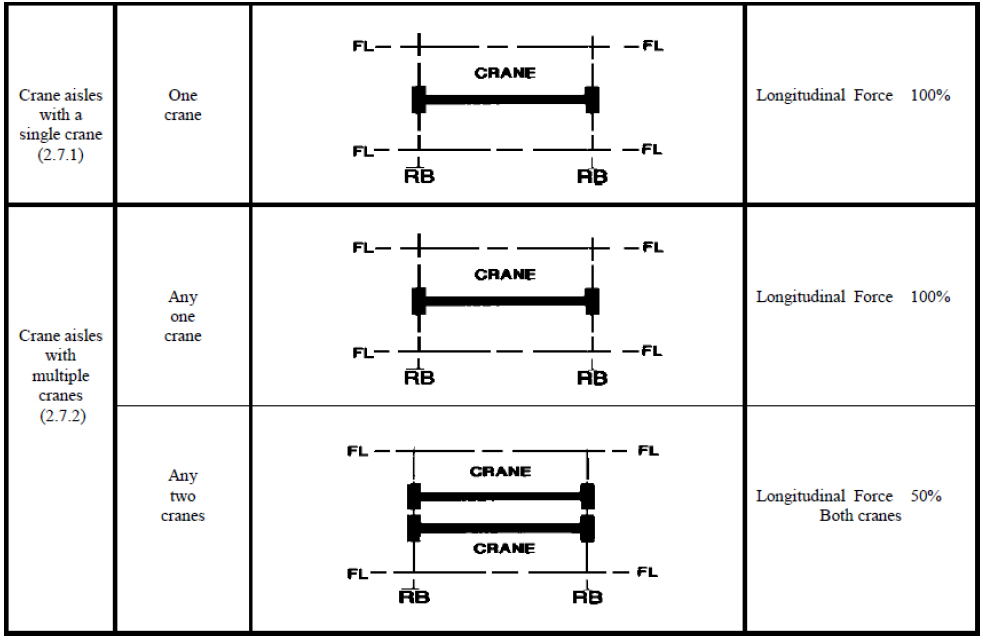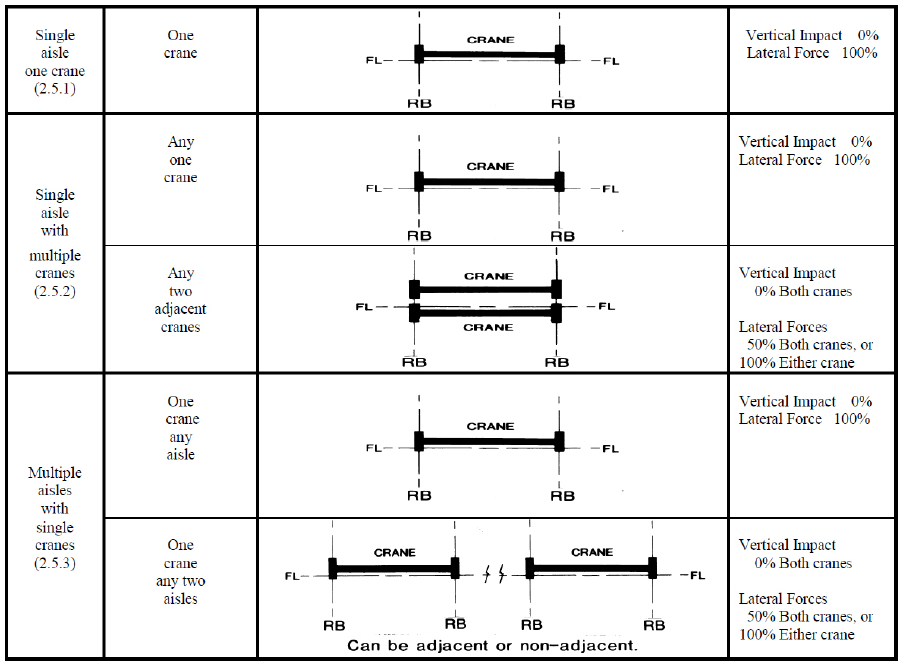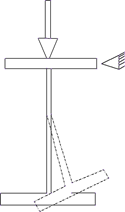Crane Beam Design per AISC 360-16
Symbols
Cv = 1.0
Fy = Specified minimum yield stress of the type of steel being used, ksi (MPa)
Aw = Area of the web, the overall depth times the web thickness, d×tw, in.2 (mm2)
Cr = 960,000 ksi (6.6 × 106 MPa), when Mu < My (LRFD) or 1.5Ma < My (ASD) at the location of the force = 480,000 ksi (3.3 × 106 MPa), when Mu ≥ My (LRFD) or 1.5Ma ≥ My (ASD) at the location of the force
Lb = Largest laterally unbraced length along either flange at the point of load, in. (mm)
Ma = Required flexural strength using ASD load combinations, kip-in. (N-mm)
Mu = Required flexural strength using LRFD load combinations, kip-in. (N-mm)
bf = Width of flange, in. (mm)
h = Clear distance between flanges less the fillet or corner radius for rolled shapes; distance between adjacent lines of fasteners or the clear distance between flanges when welds are used for built-up shapes, in. (mm)
Download ideCAD for AISC 360-16
Crane Analysis
Crane Classes
AISC Design Guide 07- Crane classification according to Industrial Buildings source; Crane load capacity was realized depending on the number of cycles it will complete during its lifetime. While A, B, and C are light and middle-class cranes, D, E, and F are defined as heavy-class cranes. These classes are determined according to the load capacity of the crane daily and lifetime cycle.

Crane Loads
It is designed according to the most unfavorable loading and deflection by applying vertical R and horizontal H and L loads on the crane beam in the form of moving load according to the regulation chosen considering the situations such as vertical impact coefficient, effect combinations, loading combinations according to the situation of one or more cranes in the same hall.

Reference documents that obtain the effects of cranes on the structural system and unfavorable loading are as follows:
AISC Steel Design Guide 7, Industrial Buildings - Roofs to Anchor Rods, 2nd Edition (2004) (SDG-7)
ASCE 07-10, Minimum Design Loads for Buildings and Other Structures (2010)
AISE Technical Report No. 13, Guide for the Design and Construction of Mill Buildings (2003)
MBMA 2010, Metal Building Systems Manual (2010)
The most unfavorable load for the design of the crane beams is that the load raised by the crest is based on one direction of the hall. This maximum load is used in the crane beam design.

The loads to be used in MBMA 2010 2.5 for the design of the frame members in the structure containing the crane and the rates of the loads were determined. AISC SDG-7 clause 13.7 achieves the most unfavorable loading condition in frame design. The minimum effect values are defined this way for the openings without crest for the frame design.

Crane Beam Design
Biaxial Moment and Axial Forces
Biaxial bending moment check is done by AISC 360-16. Mx and My are calculated with the vertical impact effect.
Shear Control
Shear strength is determined with AISC 360-16 G2-1.
The design shear strength =
The allowable shear strength =
Web Sidesway Buckling
This collapse mode may occur due to the crane beam flanges not being held against rotation and the impact of point loads on the beam due to the crane movement. High point loads cause lateral movement in the tensile flange and, thus, a severe decrease in the strength capacity. In this case, the compression flange reaches the critical buckling stress creating a failure mode. The tension flange should be sufficiently rigid to prevent this collapse, and the beam cross-section should be short enough. In the design of the crane beam, attention should be paid to increasing the Width of the flange and the thickness of the web to increase the cross-section in the most convenient way.

The nominal strength, Rn, for the limit state of sidesway buckling is determined as follows.
If the compression flange is not restrained against rotation,
Deflection Check
It is made by AISC Steel Design 7 - Industrial Buildings - Roofs to Anchor Rods 2nd Edition.

